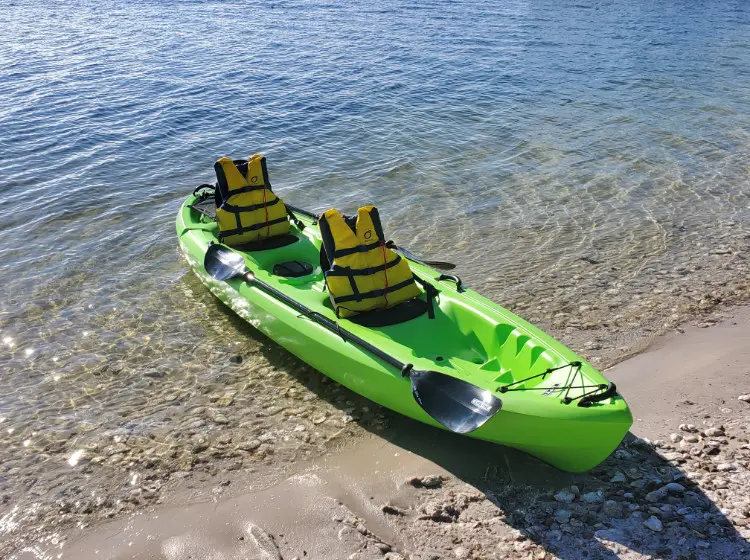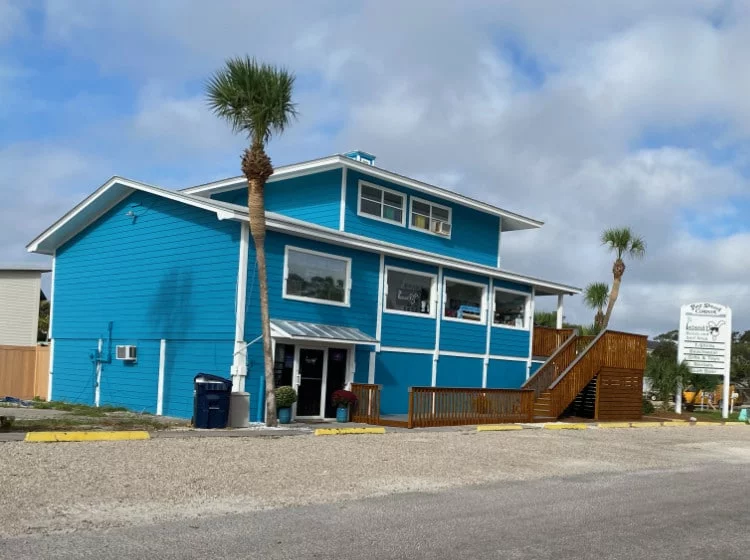You are here: Home > Things to See & Do >
Beaches on the Forgotten Coast
Franklin County features more than 250 miles of Florida beaches. Gulf beaches with miles of gently rolling surf, bay beaches with nature and privacy, beaches that are perfect for families, beaches that are great for fishing, beaches you can drive to and beaches you'll need a boat to enjoy. Every one of our beaches is beautiful but each one is different.
St. George Island Beaches
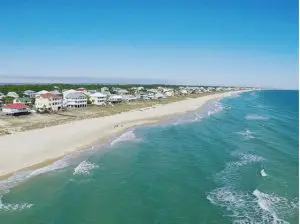 The 22 miles of St. George Island Florida's beaches are serene and pet-friendly. The island consistently rates as one of the top beaches in the U.S., with miles of uncrowded expanses for sunning and shelling, clear Gulf waters for swimming and fishing, and pristine marshes for wildlife viewing. Visitors can rent a quaint beach cottage, a multi-story luxury beach home, or lodge at one of the two island hotels or inns. Start planning your island getaway today, by booking your accommodations!
The 22 miles of St. George Island Florida's beaches are serene and pet-friendly. The island consistently rates as one of the top beaches in the U.S., with miles of uncrowded expanses for sunning and shelling, clear Gulf waters for swimming and fishing, and pristine marshes for wildlife viewing. Visitors can rent a quaint beach cottage, a multi-story luxury beach home, or lodge at one of the two island hotels or inns. Start planning your island getaway today, by booking your accommodations!
St. George Island Public Beach
The public beach on St. George Island is easy to find. From Island Drive, the only access to the island, Go over the five-mile long Bryant Patton Bridge with a gorgeous view of Apalachicola Bay. When you get to the island stop sign, turn right and then left into convenient island parking. The public beach is not only easy to find but there are bath house facilities, covered pavilions for picnics, a playground and ball court for the younger generations. The Cape St. George Lighthouse and lighthouse Keeper's House are also located in nearby Lighthouse Park.
Dr. Julian G. Bruce St. George Island State Park
The St. George Island State Park beach, located at the far east end on St. George Island, has been ranked as a Top 10 Beach by Dr. Beach for most of the past several years. At nine miles in length, this is the second-longest beachfront state park in Florida. There are two large beach use areas with ample parking, picnic pavilions, beach house facilities, grills, and boardwalks. This beach is renowned for its soft, white sand, gentle surf, and softly-sloping bottom that makes for easy beach enjoyment for the whole family. If you would like more privacy there is easy access to plenty of beaches. A number of small pull-off parking areas provide access all along the length of the beach. Fishing is a common activity here. Pets are allowed on leashes in parking lots, in campsites, and on the nature trails but not on the beaches. Alcohol is not allowed in the park. There is an entrance fee and please observe the speed limit rules as they are enforced. Wheelchair accessibility to the water is enhanced by four mobility mats installed at the #1 and #8 pull-offs and also at both large beach use areas. Three standard beach wheelchairs and a floating wheelchair are available, please inquire at the Ranger Station about availability.
East End Fishing Beach
St. George Island State Park, East End fishing beach. The East End of the state park is accessible by walking or bicycling. Access is via the gulf side beaches or by the narrow road that extends 5 miles from the Sugar Hill Beach Use Area Parking Lot to the East End. This area is for fishing only as the deep water and strong currents can be hazardous for swimming. This is one of the most popular fishing areas on the Forgotten Coast and it is as beautiful as it is productive. The deep currents that run through East Pass, which separates St. George Island from Dog Island, bring bait and bait eaters in great schools.
Unit Four Beach
Unit Four Beach on St. George Island is on the bay side of the island at East 6th Street and an entertaining walk for nature lovers. The only facility is a picnic table and the parking is minimal, but that's how most folks like this hidden gem. This is an outstanding venue for birding that covers several types of habitat. The fresh-water pools may provide secretive rails and diving kingfishers. A stroll down the beaches lined with shallow oyster bars may yield willet, plovers, herons, diving osprey and marauding eagles. This beach connects to some of the most productive shallow-water oyster bars in a bay famous for them and that makes for great fishing in close. You'll want to wear foot coverings during your walk here, and insect repellent may be handy during the warm months.
Carrabelle Beaches
The Carrabelle area features two mainland bay beach areas just west of the City of Carrabelle. Both beaches feature gentle surf protected by offshore barrier islands and both are easily accessible from U.S. Highway 98. Both beaches are close to the historic Crooked River Lighthouse and Museum.
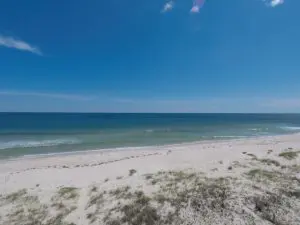
Carrabelle Beach
Located 1.5 miles west of Carrabelle, Florida on US 98. This easily-accessed, curving, white-sand beach is located just west of the City of Carrabelle on U.S. Highway 98. There is plenty of convenient parking, outdoor showers, bathroom facilities and covered picnic tables. Features several small picnic shelters with grills, restrooms and parking for about 40 vehicles. This is a very popular beach with a gently sloping bottom and calm surf. Since the beach is protected by Dog Island from heavy winds and seas, it is often the most suitable of all our major beaches for families with young children. While the center of the beach near the bath houses can get crowded on holidays, this is a long, curving beach with plenty of space to find your own sand and solitude. The beach borders on St. George Sound and the water is clear and inviting. This is a great beach for nature-watching, too. Dolphin hunt mullet up close in the surf in a sometimes spectacular display. Many shore birds can be sighted and it is a hot spot for birders during spring and fall migrations.
Old Carrabelle Beach
This magnificent stretch of soft sand is one of the best-kept secrets in Franklin County. Access is just west of the Carrabelle Bridge on Gulf Beach Road. There is no formal parking area and no facilities. Close to acres of grass beds, this beach offers superb fishing especially in the summer and fall months. But most folks like this lovely stretch of sand for its beauty and tranquility. This romantic beach is locally famous for its sunrises and sunsets.
Dog Island Beaches
Dog Island is the smallest inhabited island of the chain of four Franklin County barrier islands. It is located at the eastern end of the county, just offshore from where the Crooked River merges into the Carrabelle River and then into St. George Sound. This island is small at 6.8 miles in length, accessible only by boat, ferry or airplane. The beaches here are remote and secluded.
Dog Island Beach
This beach requires boat access and then a hike. Your efforts are rewarded with a unique beach that is high energy, low density and absolutely sparkling. There are no public facilities or stores on Dog Island. If you want it, bring it with you. This is a beach for the adventurous. It takes an effort but it is a very rewarding effort. Dog Island beaches are known for the pristine white sand, good shelling, crabbing and shore fishing, and as a superior beach-picnic and recreational boating base.
Alligator Point Beaches
This narrow beach peninsula area boasts eight miles of quiet shoreline and unparalleled fishing. There are two main beaches on Alligator Point, Florida and several public access areas along the beach plus two boat ramps on the bay side.
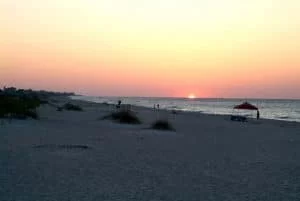 Alligator Point Beach
Alligator Point Beach
This beach is on the far east end of Franklin County. Turn off U.S. Highway 98 onto Alligator Point Road and follow it, curving around to the right. This is a long white-sand beach that many locals would probably just as soon stay undiscovered. But it's too pretty to stay hidden. This beach is locally renowned for fishing with spring, summer and fall bringing Trout, Redfish, Pompano and even runs of Tarpon. There are no public facilities and public access is limited to a few areas with minimal parking. If you want a long beach with soft sand and nature to view, try discovering Alligator Point Beach.
Bald Point State Park
Accessed off U.S. Highway 98 onto Alligator Point Road, you then follow the signage. This state park beach is perfect for nature lovers. There is an entrance fee and there are facilities and easy parking. Because of the flow of nutrient rich waters down the Ochlockonee River, this beach has an individual personality. Depending on flow and up-river rains, the water can look muddy but it supports a great deal of life. Shallow water oyster beds are magnets for fish and birds. Birders in particular will enjoy the range of shore birds and wading birds. You’ll probably want to have some hard-soled footwear for walking off the sand beaches on sharp oyster shells. Bald Point offers access to two Apalachee Bay beaches for swimming, sunbathing, fishing, canoeing, kayaking and windsurfing. Facilities include a fishing dock and picnic pavilions.
St. Vincent Island Beaches
St. Vincent Island is a 12,300-acre undeveloped barrier island owned by the Federal Government and managed as a National Wildlife Refuge. The triangular-shaped island is nine miles long and four miles wide at the east end. The island is a haven for endangered wildlife including bald eagles, loggerhead, green and leatherback sea turtles and migrating wood storks. The island is accessible only by boat. The gulf front beaches here are secluded and protected. St. Vincent features a unique bayside beach that is beautiful and remote.
Tahiti Beach
Tahiti Beach got its name because its remarkable beauty is reminiscent of a South Seas paradise. Located on the easternmost end of St. Vincent Island, this lovely hide-a-way requires a boat for access. Due to sometimes strong currents in West Pass, this is not recommended for swimming. But the beach is perfect for shelling, sun worshiping and, for the more adventurous, a good base from which to explore more of the island’s varied wildlife.
Beach Supplies & Rentals
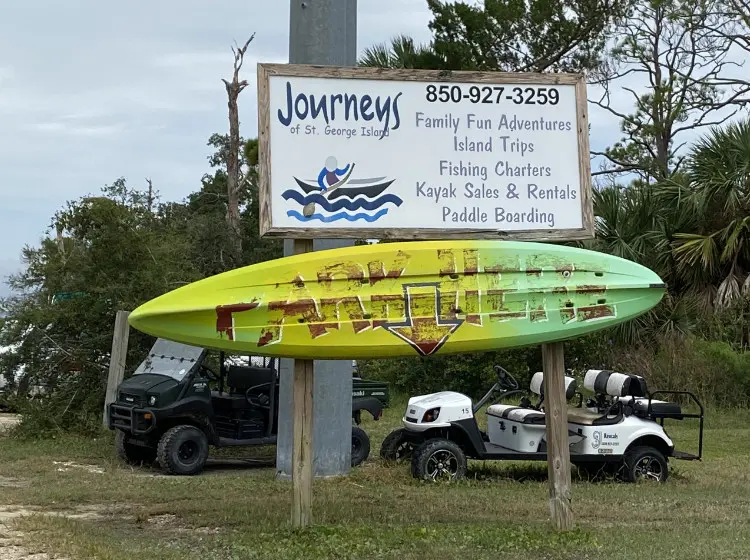
Journeys of St. George Island
St. George Island

Carrabelle Bicycle House and Coastal Motion Paddleboard
Carrabelle
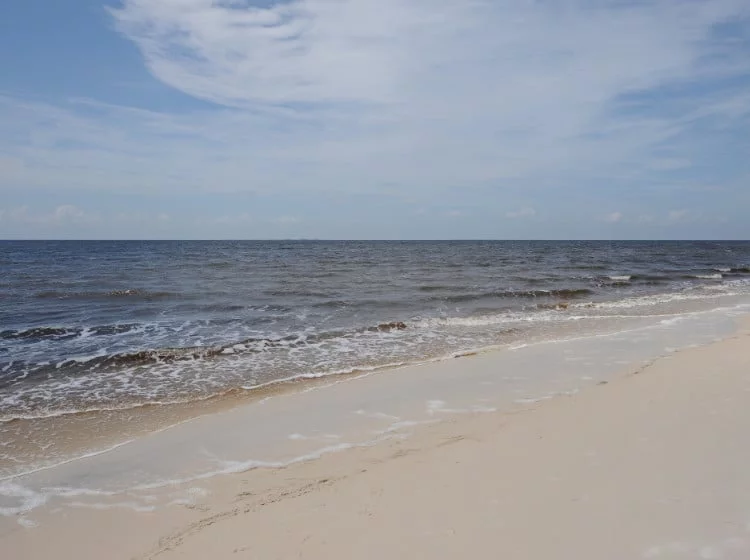
St. George Island Beach Service
St. George Island
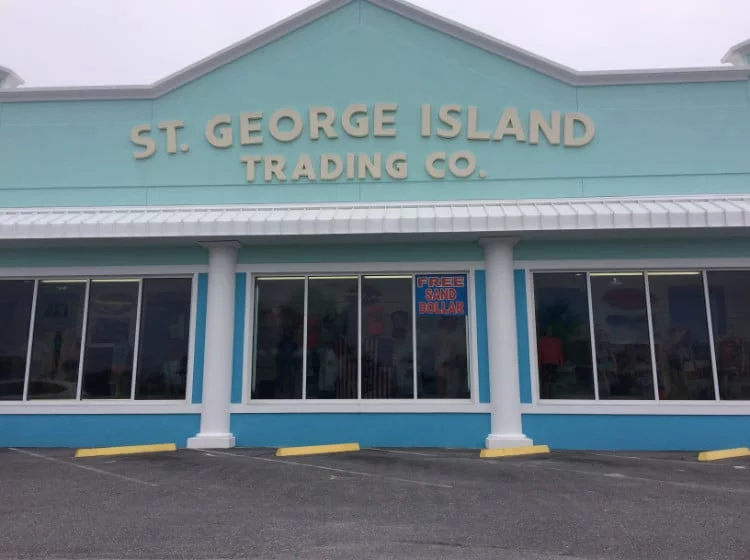
St. George Island Trading Company
St. George Island
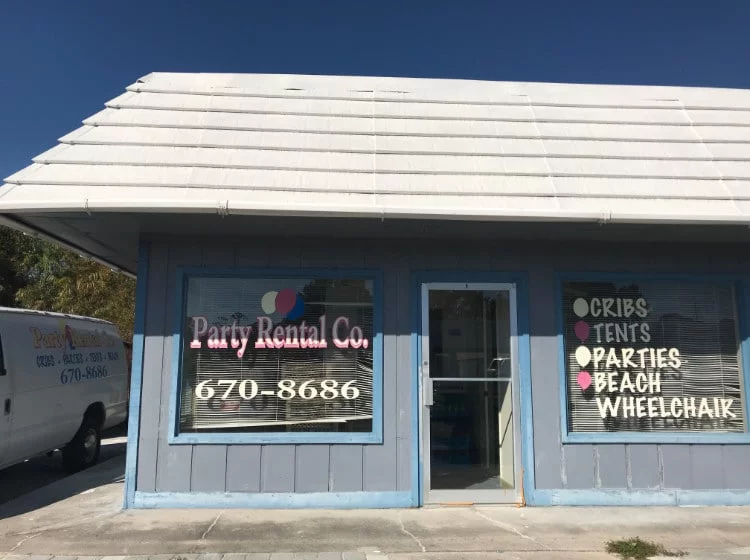
Party Rental Company
Eastpoint
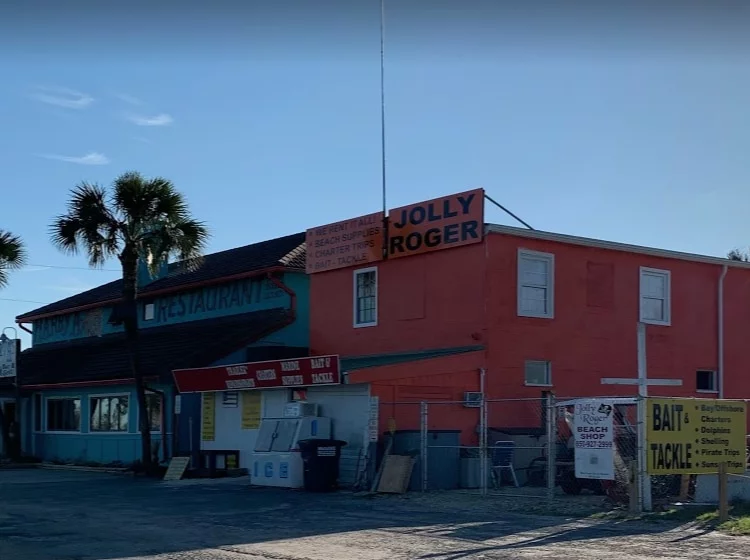
Jolly Roger Beach Shop
St. George Island
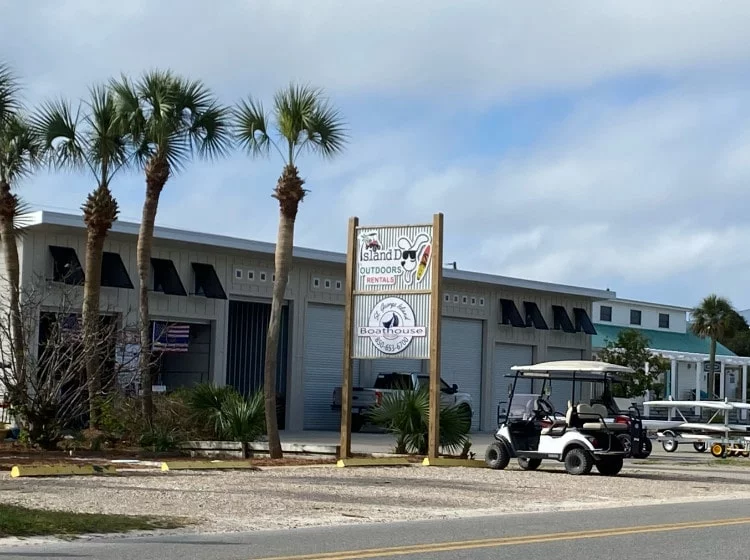
Island Dog Outdoors
St. George Island
AJ’S BEACH SERVICE
Eastpoint, St. George Island
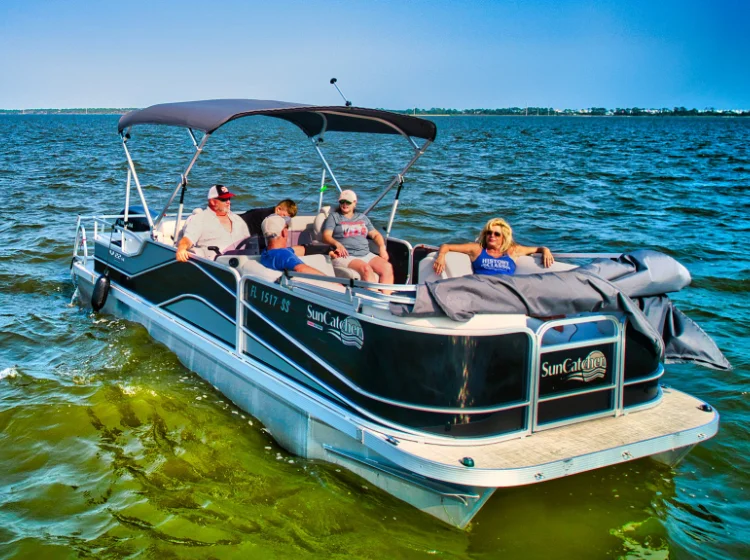
Pirates Cove Pontoon Rentals
Apalachicola, Carrabelle, Eastpoint, St. George Island
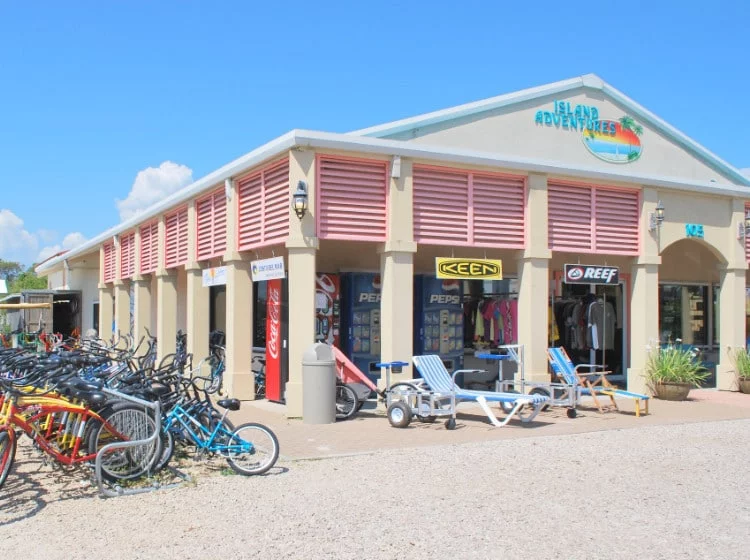
Island Adventures
St. George Island

The Beach Bum Rentals
Eastpoint
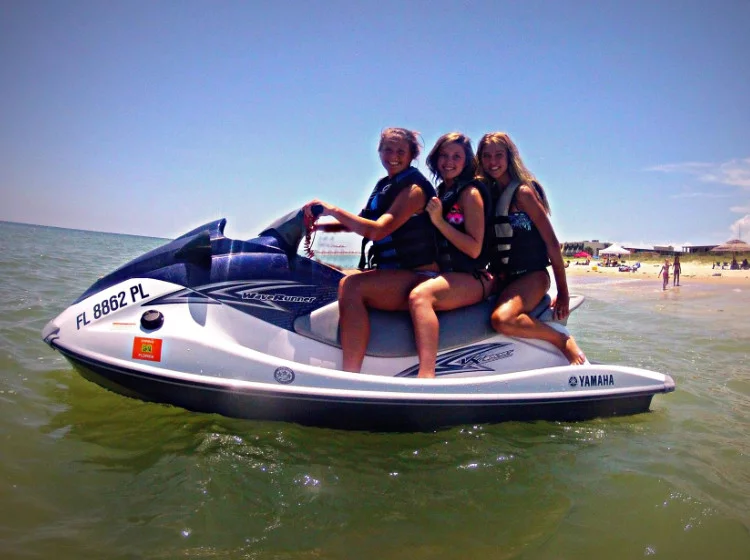
The Jetski Hut
St. George Island
